Epigenetic regulation of HBV-specific tumor-infiltrating T cells in HBV-related HCC
- PMID: 36999652
- PMCID: PMC10442105
- DOI: 10.1097/HEP.0000000000000369
Epigenetic regulation of HBV-specific tumor-infiltrating T cells in HBV-related HCC
Abstract
Background and aims: HBV shapes the T-cell immune responses in HBV-related HCC. T cells can be recruited to the nidus, but limited T cells participate specifically in response to the HBV-related tumor microenvironment and HBV antigens. How epigenomic programs regulate T-cell compartments in virus-specific immune processes is unclear.
Approach and results: We developed Ti-ATAC-seq. 2 to map the T-cell receptor repertoire, epigenomic, and transcriptomic landscape of αβ T cells at both the bulk-cell and single-cell levels in 54 patients with HCC. We deeply investigated HBV-specific T cells and HBV-related T-cell subsets that specifically responded to HBV antigens and the HBV + tumor microenvironment, respectively, characterizing their T-cell receptor clonality and specificity and performing epigenomic profiling. A shared program comprising NFKB1/2-, Proto-Oncogene, NF-KB Sub unit, NFATC2-, and NR4A1-associated unique T-cell receptor-downstream core epigenomic and transcriptomic regulome commonly regulated the differentiation of HBV-specific regulatory T-cell (Treg) cells and CD8 + exhausted T cells; this program was also selectively enriched in the HBV-related Treg-CTLA4 and CD8-exhausted T cell-thymocyte selection associated high mobility subsets and drove greater clonal expansion in HBV-related Treg-CTLA4 subset. Overall, 54% of the effector and memory HBV-specific T cells are governed by transcription factor motifs of activator protein 1, NFE2, and BACH1/2, which have been reported to be associated with prolonged patient relapse-free survival. Moreover, HBV-related tumor-infiltrating Tregs correlated with both increased viral titer and poor prognosis in patients.
Conclusions: This study provides insight into the cellular and molecular basis of the epigenomic programs that regulate the differentiation and generation of HBV-related T cells from viral infection and HBV + HCC unique immune exhaustion.
Copyright © 2023 The Author(s). Published by Wolters Kluwer Health, Inc.
Conflict of interest statement
Liang Chen was supported by National Natural Science Foundation Outstanding Youth Science Fund Project. Maojun You was supported by Special Research Assistant Project of Chinese Academy of Sciences and fellowship of China Postdoctoral Science Foundation (2021M703419). Yanan Gao was supported by Beijing Municipal Science and Technology Commission, Administrative Commission of Zhongguancun Science Park (Z221100007922030). The remaining authors have no conflicts to report.
The authors have no conflicts to report.
Figures

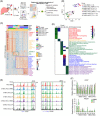

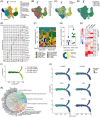
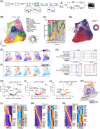
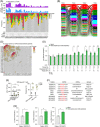

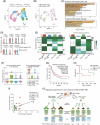
Comment in
-
More immunosuppressive, more immunotherapy responsive? A double-edged sword of HBV-induced immune response in HCC.Hepatology. 2023 Sep 1;78(3):706-708. doi: 10.1097/HEP.0000000000000393. Epub 2023 Apr 5. Hepatology. 2023. PMID: 37013921 No abstract available.
References
-
- Haber PK, Puigvehi M, Castet F, Lourdusamy V, Montal R, Tabrizian P, et al. . Evidence-based management of hepatocellular carcinoma: systematic review and meta-analysis of randomized controlled trials (2002-2020). Gastroenterology. 2021;161:879–98. - PubMed
-
- Sia D, Jiao Y, Martinez-Quetglas I, Kuchuk O, Villacorta-Martin C, Castro de Moura M, et al. . Identification of an immune-specific class of hepatocellular carcinoma, based on molecular features. Gastroenterology. 2017;153:812–26. - PubMed
-
- Zheng C, Zheng L, Yoo JK, Guo H, Zhang Y, Guo X, et al. . Landscape of infiltrating T cells in liver cancer revealed by single-cell sequencing. Cell. 2017;169:1342–56. e1316. - PubMed
Publication types
MeSH terms
Substances
LinkOut - more resources
Full Text Sources
Medical
Research Materials
Miscellaneous

